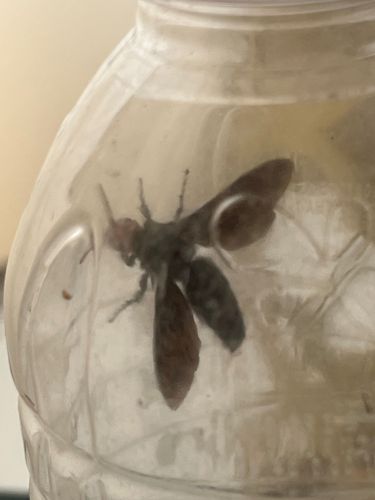Black-bodied Wasp (likely a species of Mason Wasp or Potter Wasp)
Scientific Name: Eumeninae (subfamily, specific genus and species are hard to determine from image)
Order & Family: Order: Hymenoptera, Family: Vespidae, Subfamily: Eumeninae
Size: Typically 10-25 mm (0.4-1.0 inches), though size can vary by species.

Natural Habitat
Widely distributed globally, found in diverse habitats including woodlands, grasslands, urban gardens, and agricultural areas. They prefer places where they can find suitable mud or existing cavities for nest building.
Diet & Feeding
Adults feed on nectar and sometimes honeydew. Larvae are carnivorous, feeding on caterpillars and beetle larvae that the female wasp paralyzes and places in the nest cells.
Behavior Patterns
Solitary wasps; females construct nests from mud, often in existing cavities like hollow stems, old beetle borings, or even crevices in walls. Each cell in the nest is provisioned with paralyzed prey (caterpillars or beetle larvae) for the developing larva, and then an egg is laid. They are not typically aggressive unless their nest is directly threatened.
Risks & Benefits
Risks: Can sting if provoked, though generally less aggressive than social wasps. The sting can be painful but is usually not medically significant unless an individual is allergic. Benefits: Excellent pest control agents, as they parasitize and kill troublesome insects like caterpillars and beetle larvae, helping to protect plants and crops.
Identified on: 9/28/2025